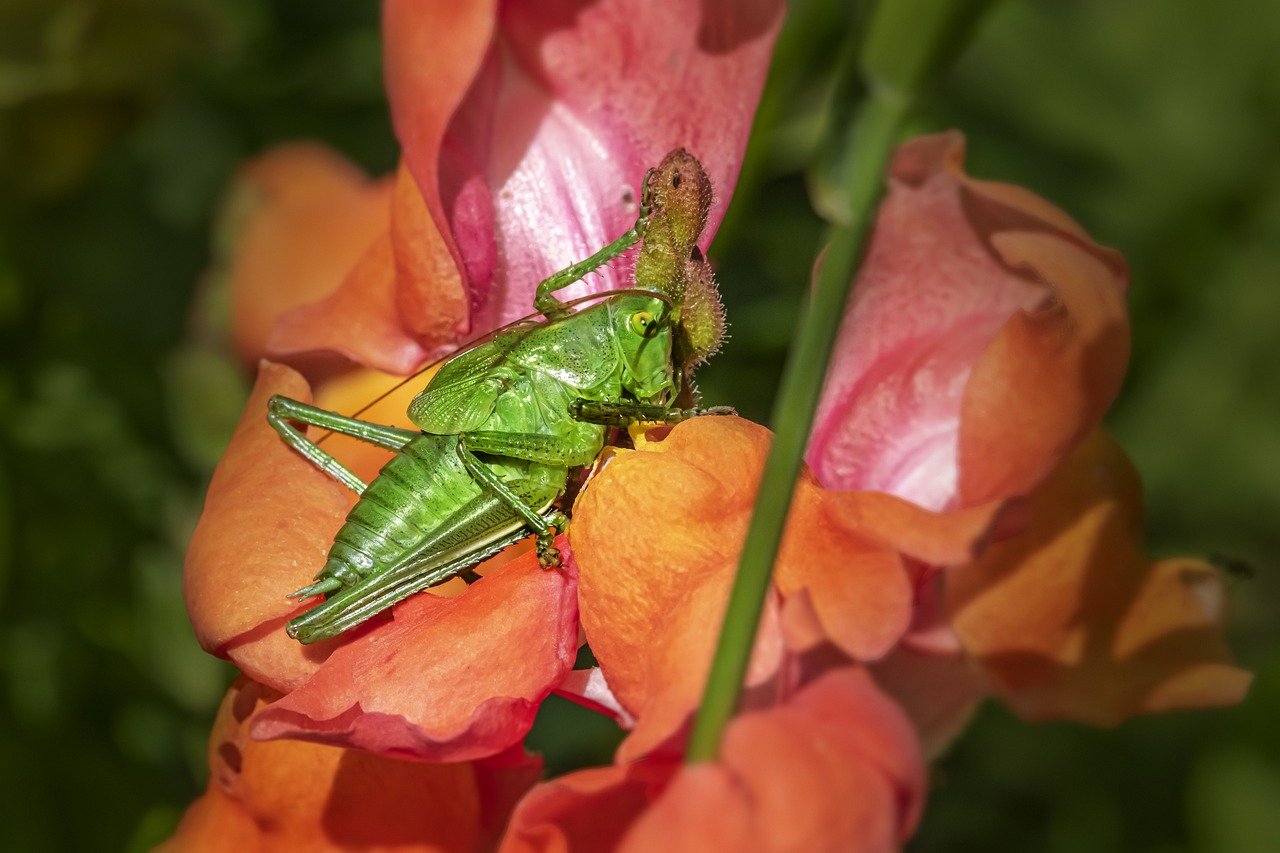The Great Green Bush Cricket (Tettigonia viridissima) is a large, bright green insect known for its distinctive song and impressive jumping abilities. Belonging to the family Tettigoniidae, it is one of the largest bush crickets in Europe. Here’s an overview of the Great Green Bush Cricket:
Appearance
Adult Cricket:
- Size: Adults can reach up to 40-55 millimeters in length, excluding the long ovipositor in females.
- Coloration: They are predominantly bright green, which helps them blend into their grassy habitats. They have a slender body, long antennae, and powerful hind legs adapted for jumping.
- Wings: The wings are long and extend beyond the tip of the abdomen in both sexes, though females have a distinctive ovipositor for laying eggs.
Nymphs:
- Size: Nymphs resemble adults but are smaller and wingless, gradually developing wings through successive molts.
- Coloration: They are also green, matching the adults in appearance.
Habitat
- Preferred Habitats: The Great Green Bush Cricket prefers meadows, grasslands, hedgerows, and open woodland areas. They are often found in tall grasses and shrubs.
- Geographic Range: This species is widespread throughout Europe and parts of Asia, thriving in temperate regions.
Life Cycle
- Eggs: Females lay eggs in the soil or plant stems using their ovipositor. Eggs are elongated and can remain dormant through the winter, hatching in the spring.
- Nymphs: Nymphs undergo several molts as they grow, gradually developing wings and reproductive structures.
- Adults: Adults emerge in late summer and are most active from July to September.
Behavior
- Feeding: The Great Green Bush Cricket is omnivorous, feeding on a variety of plants and small insects. Its diet includes leaves, flowers, and even other smaller invertebrates.
- Song: Males are known for their loud, continuous song, produced by stridulation (rubbing their wings together). This song is used to attract females and can be heard on warm summer evenings.
- Activity: They are primarily nocturnal but can also be active during the day. Their green coloration provides excellent camouflage among the vegetation.
Identification Tips
- Size and Color: The large size and bright green color make the Great Green Bush Cricket relatively easy to identify.
- Wings and Legs: Long wings and powerful hind legs are characteristic features. Females have a noticeable ovipositor.
- Song: The continuous, loud song of the male is a distinctive auditory clue for identification.
Ecological Role
- Predator and Prey: The Great Green Bush Cricket plays a dual role in the ecosystem, both as a predator of smaller insects and as prey for birds, mammals, and other larger predators.
- Pollination: By feeding on flowers, they can also contribute to pollination, although this is a secondary role compared to their primary dietary habits.
Conservation Status
- Population: Generally, the Great Green Bush Cricket is not considered endangered and has a stable population in many parts of its range.
- Conservation Efforts: Conservation efforts focus on maintaining natural habitats, such as meadows and grasslands, to support healthy populations of these crickets.
Summary
The Great Green Bush Cricket (Tettigonia viridissima) is a remarkable insect known for its size, vibrant color, and distinctive song. Found across Europe and parts of Asia, it inhabits meadows, grasslands, and hedgerows. These crickets play important roles in their ecosystems as both predators and prey. Recognizing them involves noting their bright green coloration, long wings, powerful hind legs, and the males’ loud song. Conservation efforts ensure that their natural habitats are preserved to support their populations.
Views: 1730
Subscribe to the newsletter:
